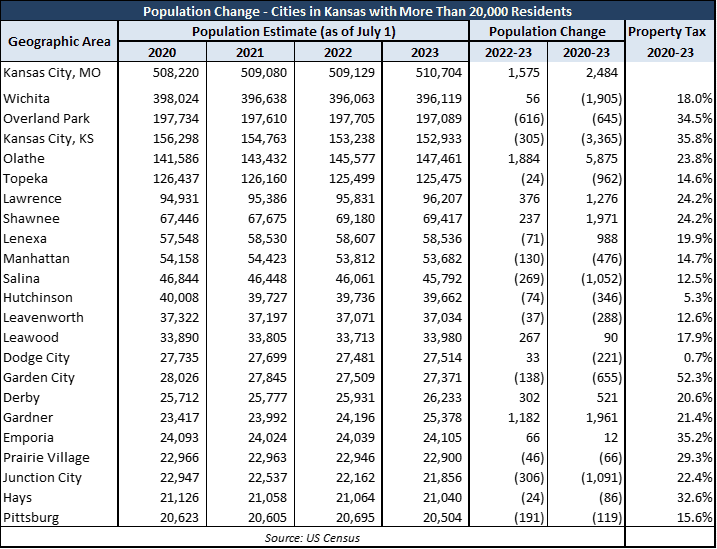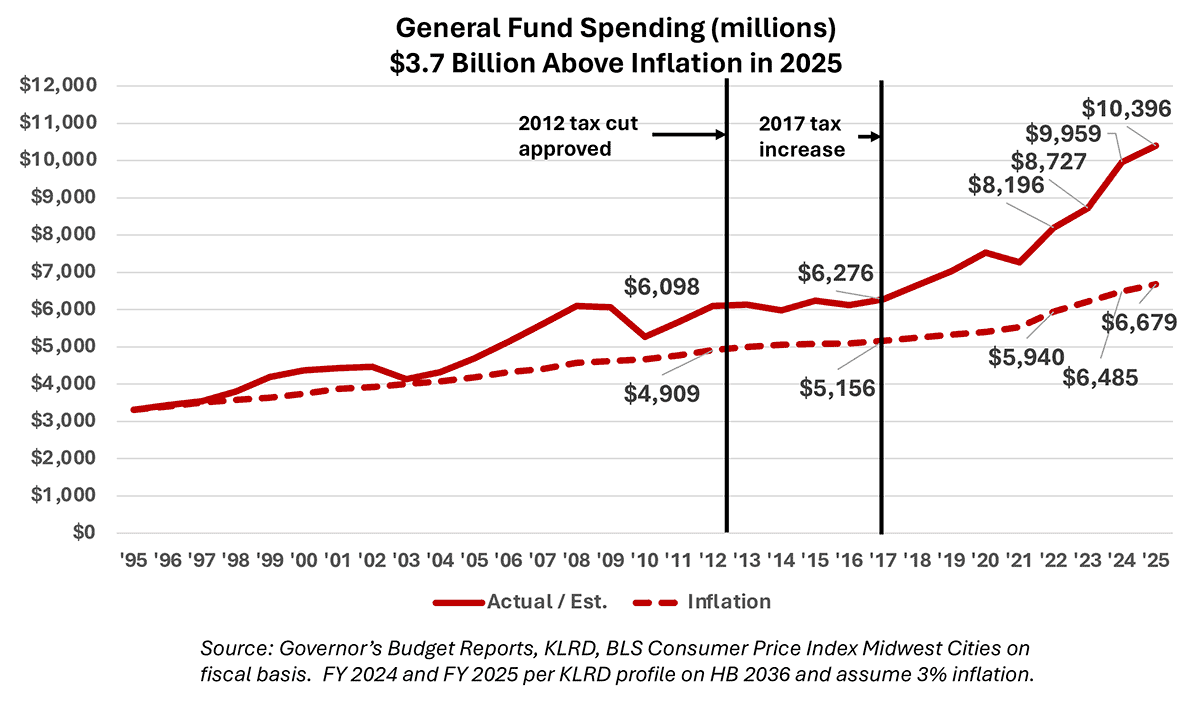Most of the largest cities in Kansas have lost population over the last three years.
According to data from the United States Census Bureau, only eight of the 22 cities in Kansas with populations over 20,000 have seen an increase in population since 2020.
Johnson County is one of the few that has seen an increase over the last three years, with only Overland Park and Prairie Village seeing a net decrease in population. Overland Park fell from 197,734 residents in 2020 to 197,089 in 2023, a decrease of 645. Prairie Village dropped from 22,966 to 22,900 over the same time period, a net loss of 66 residents. Leawood, like Overland Park and Prairie Village, supposedly considered one of the most attractive places to live in the state, saw a modest increase of just 90 residents over the three-year period.
By contrast, Olathe saw an increase of 5,875 residents; Shawnee’s population increased by 1,971; Lenexa added 988 residents, and Gardener increased by 1,961.
Meanwhile, Kansas City, Missouri, increased by 2,484 residents, while Kansas City, Kansas, lost 3,365. Wichita — the largest city in the state — saw a drop of 1,905 residents.

What is driving the population decline?
Large property tax hikes may be part of the problem in Overland Park, where city officials imposed a 34.5% tax increase over the last three years. Prairie Village also imposed a large property tax increase of 29.3%.
Prairie Village residents have also seen repeated controversy within the city government. Prairie Village has been sued over council appointment procedures, made ethics code changes of dubious constitutionality, had bitter debates over rezoning, and tried to strip homeowners of property rights.
Residents of all but two of the largest cities endured double-digit tax increases; Dodge City property tax increased by 0.7%, and Hutchinson’s increase is 5.3%. Garden City hiked property tax by a whopping 52.3%.
Four of the six main university cities in the state have also largely seen population drops. Wichita, Hays, Pittsburg, and Manhattan have all had at least minor population losses, while Lawrence and Emporia saw modest increases.
IRS data shows high tax jurisdictions lose population
The Wall Street Journal reported in 2023 that Internal Revenue Service (IRS) migration data from 2021, the most recent year available, shows an accelerating trend of residents fleeing deep blue states.
As an example, the WSJ cited Illinois, where a net of 105,000 residents exited the state along with roughly $10.9 billion in adjusted gross income.
It’s not just blue states losing residents and income, however. Kansas lost $234 million; the five largest counties have also seen a net loss over the last five years.
Between 2017 and 2021, Johnson County suffered a net loss of $227.5 million in AGI, having had net losses in four of the last five years. It is also noteworthy that net migration into Johnson County from other parts of Kansas has dramatically slowed over the last five years, and it was barely positive in 2022.
Sedgwick County saw a slight uptick in 2021 of about $9.6 million but has a net loss of about $396 million over the five-year period. Wyandotte, Shawnee, and Douglas counties have had net losses in AGI in each of the last five years, losing $229 million, $210 million, and $106 million, respectively.
Indeed, while the loss of AGI is not unique to those five counties — the rest of the state lost a bit over $931 million in the same time period — the combined loss to the tax base of those five counties at approximately $1.2 billion was more than the rest of the state combined.
Meanwhile, Governor Laura Kelly continues to show disdain for taxpayers, vetoing three tax relief bills for allegedly giving too much relief to the wrong people or not being affordable. Since Kelly took office in 2019, Governor Kelly and a bipartisan majority of Democrats and Republicans have dramatically increased spending by 56%, but even with that profligate spending, the state has more than $4 billion in reserves.


